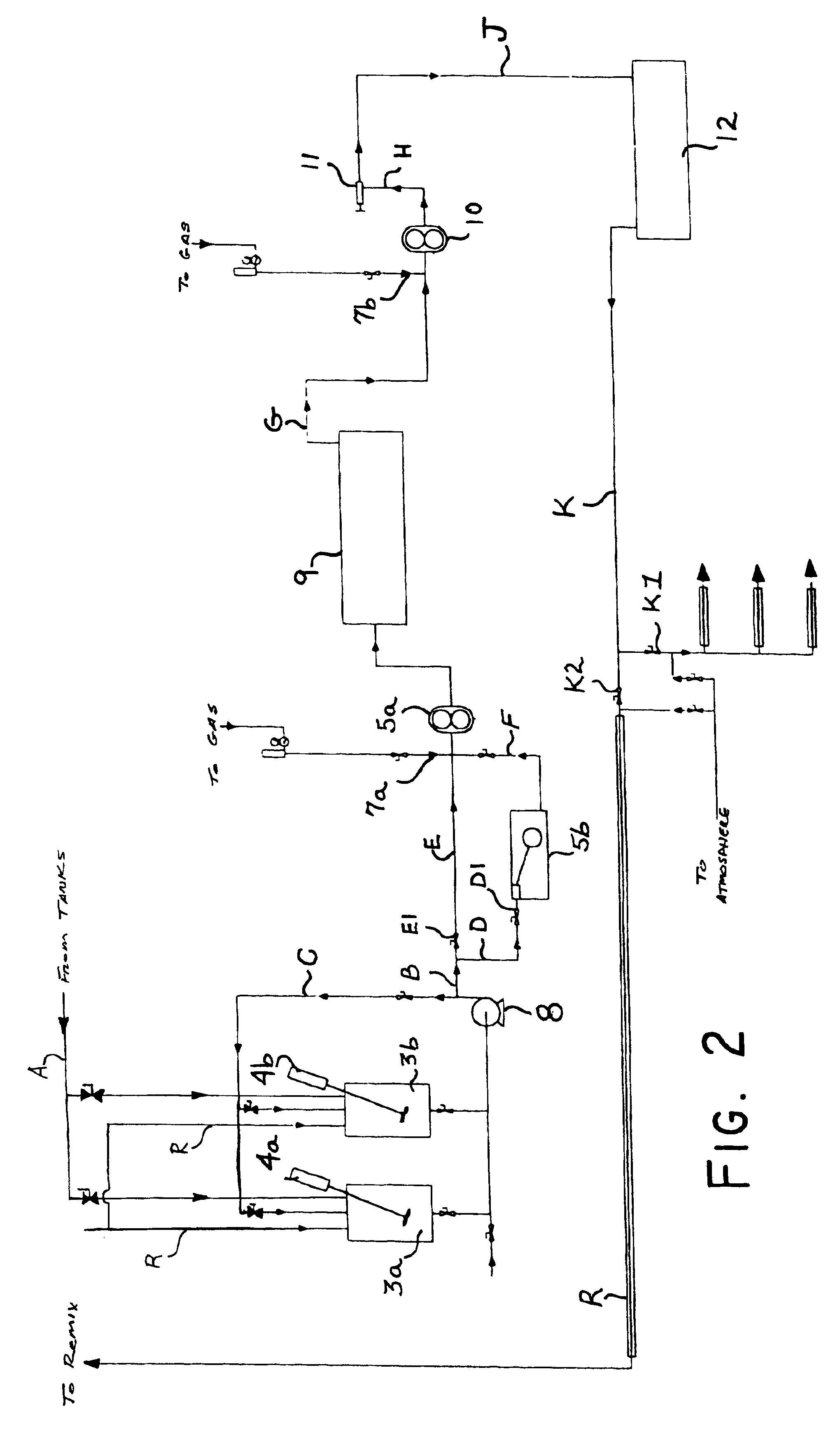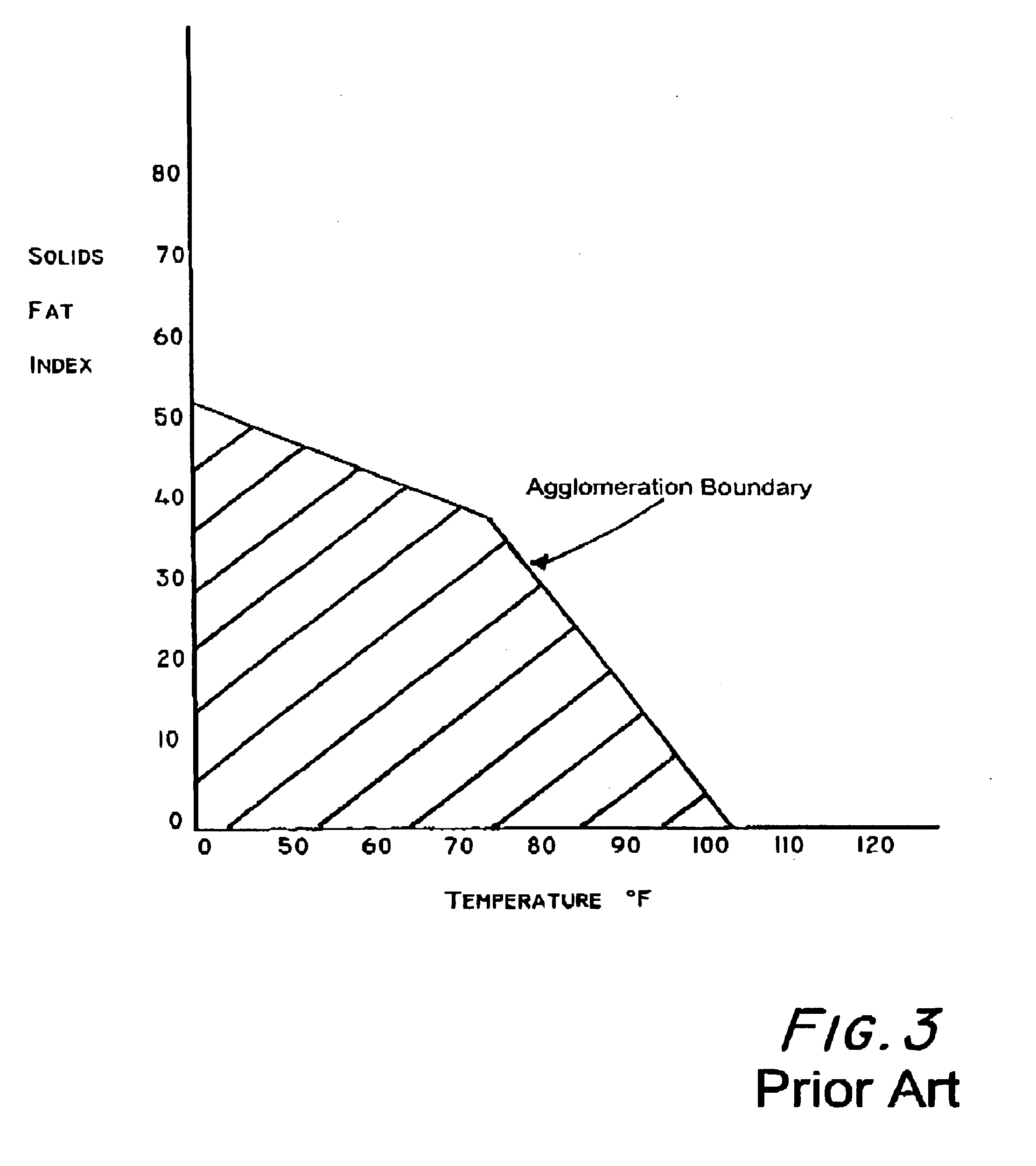An unaerated shortening has a yellowish, translucent appearance and is distinctly unappetizing to consumers.
However, while such plastic shortenings have been aerated for many years it is important to appreciate that the
aeration of the fat provides little contribution to the development of
air voids or air bubbles or air pockets in the dough or the final baked product produced with the aerated plastic shortening.
As indicated in the prior art, considerable difficulty has been encountered in obtaining a uniform product when using a relatively high level of gas.
However, while these cooling processes are successful for many types of fats, they are unable to provide sufficient cooling during their cycle of operation to sufficiently chill fats and oils which have solids compositions which fall below the agglomeration boundary (line AB) of a Solids Fat Index such as is shown in FIG.
For mixtures of hydrogenated triglycerides having solids compositions which fall below the agglomeration boundary, conventional chilled drum and chilled belt methods of flaking do not provide sufficient chilling time or sufficient temperature reduction in the mixture to: (1) produce sufficient
nucleation in the fat mixture to allow flaking; (2) prevent the solidified fat from forming a sheet of material rather than flaking; and (3) reduce the temperature of the solidified material sufficiently to avoid re-melting of the material due to the
latent heat of
crystallization once the material is removed from the belt or roller and packaged.
Yet another drawback of the use of drum cooling for materials of the kind previously described is that when the
melting point of the material becomes sufficiently low, generally 105° or below, the
latent heat of
crystallization will tend to be sufficient to virtually remelt the material or to cause the flakes or chips of the material to become a connected
mass within the packaging material.
Therefore, the use of
rotating drum devices to cool materials having low melting points becomes ineffective, and triglycerides and other oils which have low melting points cannot be mixed with other substances which would have the effect of lowering the
melting point of the
triglyceride or the fatty substance to a point at which the drum cooling method would be ineffective as a result of the
latent heat of crystallization causing the newly solidified material to form a
mass once placed into packaging.
It will be appreciated by those skilled in the art that increasing
retention time on the cooled
rotating drum is an insufficient solution to this problem.
In this situation, slowing the drum can result in substantial loss of heat into the vat of hot or warm oil or
triglyceride and can result in the heating of the material in the vat and the cooling of the drum operating at cross purposes.
Plastic shortening interferes with proper hydration and
gluten formation, hence plastic shortening are used at lower levels.
Second, the
solid fat flakes occupy space within the dough.
Additional fat flake can be undesirable for several reasons.
The additional fat can affect the dough
recipe, the additional fat can alter the nutritional values of the product, lower fat products are desired by the
consumer and the use of additional fat increases costs.
However, the resulting product only contained less than 12% by volume of air.
This limited level of gas incorporation was deemed insufficient to provide the necessary
cost savings required by manufacturers or to provide a sufficient increase in the amount of air which could be incorporated into baked dough products.
 Login to View More
Login to View More  Login to View More
Login to View More 


